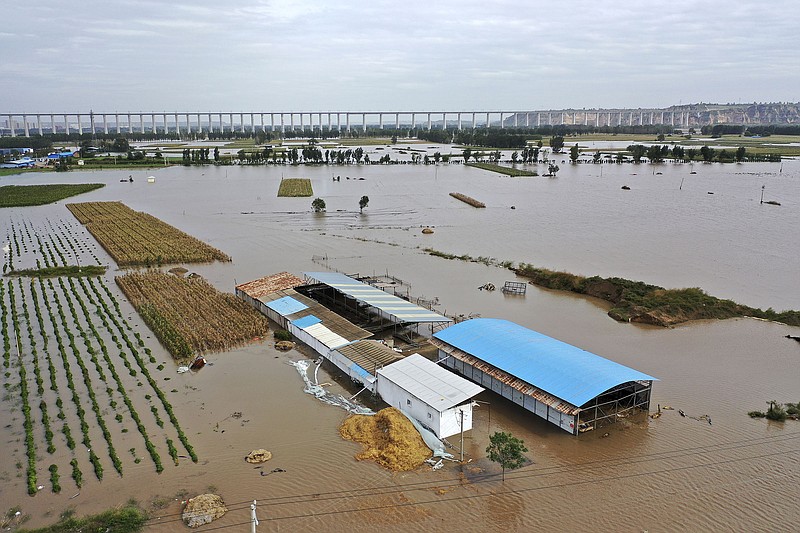China's largest coal-producing region was hit by severe flooding, threatening the country's already strained power supply and displacing more than 120,000 people as residents called for help from other regions.
Officials in the northern Chinese province of Shanxi said Sunday that more than 1.75 million people in 11 cities across the province had been affected, with at least 17,000 homes collapsing and about 494,210 acres of land destroyed. At least six people have died, according to authorities.
Landslides and flooding in neighboring Shaanxi province had displaced at least 70,000 people and killed 12.
[Video not showing up above? Click here to watch » https://www.youtube.com/watch?v=IduFMPNvkm4]
The rains, which started in late September, had largely subsided Sunday but were still causing landslides and flooding as officials warned residents, factories, schools and mines to stay on alert. Videos from Shanxi showed submerged villages, flooded farmland, drowned livestock and residents evacuating their homes with their belongings in plastic bags.
"Our team was evacuating villagers day and night. The whole village was flooded, with water levels as high as [10 feet]," said Pao Hua-an, head of Jingping village, who said they were able to move all 1,300 residents.
Volunteers were updating a running list of more than 50 areas in need of help. In Yuncheng village, trapped residents waiting for rescue had built their own dam, guarding it in shifts.
The flooding marks the latest natural disaster in China after record rains over the summer in Henan province left more than 300 dead, underlining the country's vulnerability to extreme weather events linked to climate change.
Ahead of a key climate summit in November, China, the world's largest contributor of carbon emissions, is expected to release details of its plans to tackle climate change this week.
The rains come as the country is grappling with power shortages caused in part by the rising costs of coal, the main source of electricity in China. As of Friday, 60 of Shanxi's coal mines had suspended operations and 372 other mines had also halted work, according to the province's emergency management department.
Local officials are under pressure to stabilize coal supplies. Shanxi province produced 1.06 billion tons of coal in 2020, more than a quarter of the country's total. On Sunday, Shanxi's vice governor, Wang Yixin, called on the province's state-owned companies to "ensure energy security" and guarantee a stable coal supply "without regard to conditions."
Officials also warned of the risk to the province's many cultural relics. Last week, the walls around Pingyao, a town known for architecture from the Ming and Qing dynasties, partially collapsed. Footage online showed collapsed railways and roads.
On the social media website Weibo, some commentators complained that the floods had not garnered attention earlier because small towns and rural areas had been hit first. One said, "the people of Shanxi are heartbroken. We are the only ones who are paying attention to our hometown."
Information for this article was contributed by Lyric Li and Alicia Chen of The Washington Post.

